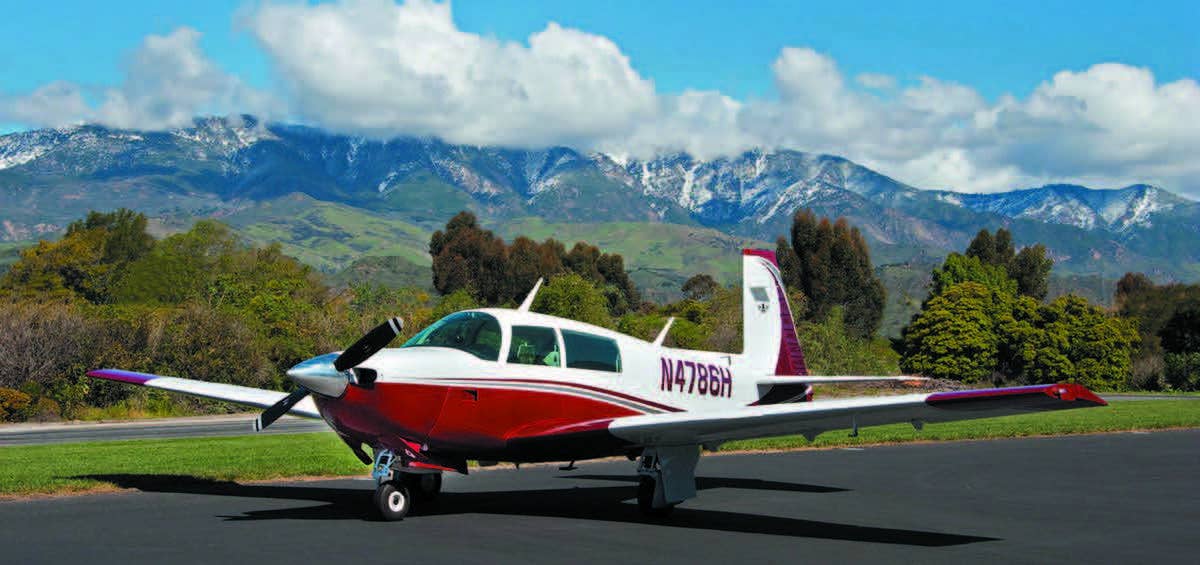Buying A Used Aircraft: Mooney M20J
Pilots who have trained in fixed landing-gear airplanes like the Piper Warrior, or the Cessna 172, have long considered a Mooney M20J the logical step-up, as experience begins to gel…

A 1979 Mooney M20J. Photo credit: Charles Raines/Aviation Consumer Magazine
Pilots who have trained in fixed landing-gear airplanes like the Piper Warrior, or the Cessna 172, have long considered a Mooney M20J the logical step-up, as experience begins to gel and additional ratings appear in the logbook. Mooney M20Js typically achieve airspeeds north of 150 knots, and the 201 is known for its low fuel consumption rate of around 11 GPH. This combination of speed and economy is what makes the Mooney M20J attractive, and “Mooniacs,” as they like to call themselves, are legion. Still, several ownership and management changes (and some shutdowns) over the past several years at the company’s Kerrville, Texas, plant may be cause for concern when considering the long-term supportability of the sizable fleet, although there’s currently an acceptable parts supply and decent tech support, we’re told. There are lots of airplanes to support.
More than 11,000 Mooneys have been built, beginning with the Mooney Mite in 1947. This single-engine, single-seat, low-powered aircraft had obvious limitations. But it was the progenitor of Mooney’s distinctive design—with an upright vertical stabilizer, slender wings, retractable landing gear and relatively high cruise speeds—establishing Mooney as a player in the growing post-World War II aviation industry. Several unique attributes contributed to Mooney performance: Its low-drag frontal area gave it an aerodynamically refined shape; its push-rod control actuators, not cables and bell cranks, contributed to the airplane’s tight, positive responsiveness; and the Mooney M20J’s elevator pitch was accomplished by moving the entire tail assembly, a low-drag solution that added to the Mooney’s speed advantage over other four-seat single-engine airplanes.
Mooney M20J Review: Solid Roots Make It Special
These design features can be found in the Mooney M20J’s immediate predecessor, and all succeeding modifications and variants thereafter. The Mooney M20J’s offspring include the Mooney PFM, a short-lived project with automaker Porsche, and the turbocharged, oxygen-equipped Mooney M20K. More recent versions include the M20R Ovation, and the Mooney M20L or “long-body,” which led to the Mooney M20M Bravo and the last M20J to roll off the line—the Allegro. The theme along this path has always been bigger, faster, more efficient.
Mooney M20J Interior
While Cessna and Piper airplanes have more upright, lounge-chair type seating, all the Mooneys can be characterized by a kind of sports-car feel, with legs stretched out in front like you’re driving an old MG. There is plenty of elbow room, but this sports-car feel is a consequence of the airplane’s small frontal area, which contributes to the M20J’s speed. There is a downside to the airplane’s sleek aerodynamic design. Some shops call it the “Mooney factor,” which means more time on the shop floor for upgrades and upkeep because of limited access to systems without sizable teardown—including the single-piece riveted avionics radio stacks in early-gen models, as one example.
Also, the airplane’s slick aerodynamic profile means it can be a handful in the landing pattern, as all that speed needs to be scrubbed off for landing. Landing gear extension speeds need to be met, flaps need to be introduced carefully, and positive speed management must be maintained to avoid hard, prop-strike bounces and even overshoots.
A glance at the most recent NTSB accident stats confirms landing-related mishaps (runway loss of control, or RLOC) outnumber engine-mechanical, fuel related, or inflight loss of control. The key? Solid transition training, and always nailing the airspeed early in the landing descent and through the landing flare. From our experience, Precise Flight speedbrakes—a common aftermarket mod—can help.
Mooney Aircraft’s Loyal Followers
Like most complex piston singles, the current market for good M20J models is strong. The latest Aircraft Bluebook suggests a 1980 M20J retails for around $82,000, but well-maintained ones with new avionics, paint and other upgrades sell for a lot more. Mooneys boast a loyal following, and a strong owners group called The Mooney Aircraft Pilots Association (mooneypilots.org) is worth the membership even when shopping for a Mooney. Members have access to operating tips, technical resources, training and camaraderie.
For a deeper dive on the Mooney M20J, head to Aviation Consumer and the Used Aircraft Guide, where you’ll get a detailed model history, historical resale values, recent FAA AD’s, competing model speed/payload/price comparisons and a detailed current NTSB accident scan summary.






